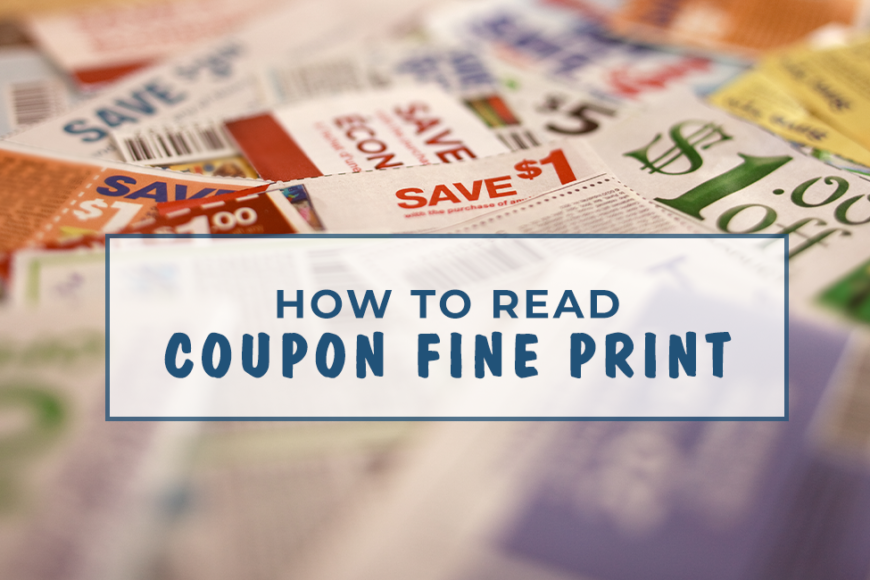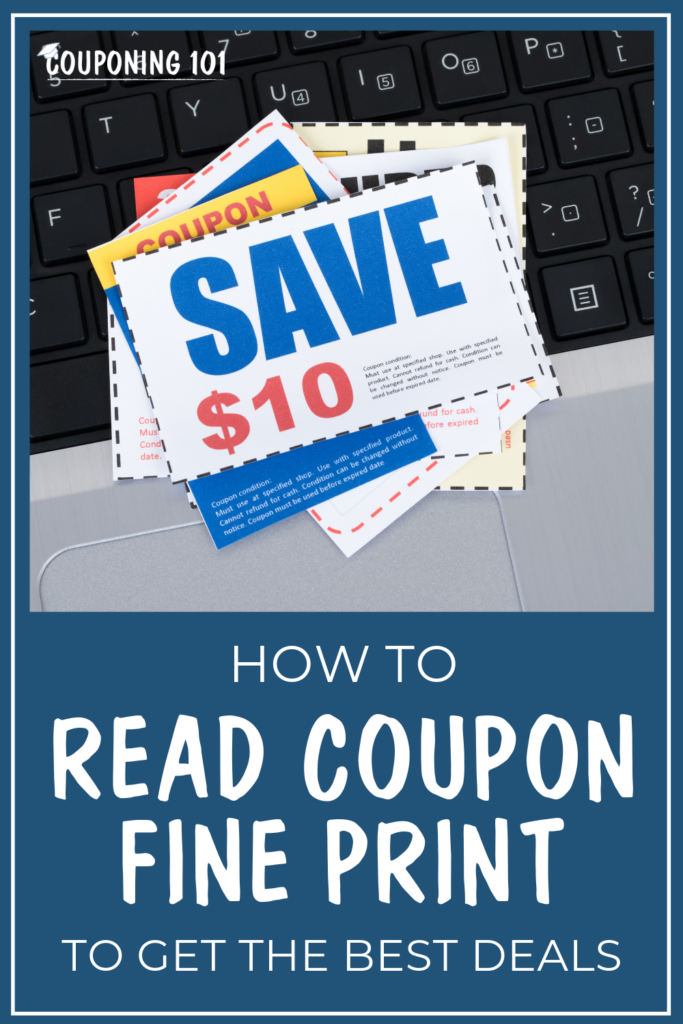
How to Read Coupon Fine Print to Get the Best Deals
One thing that a lot of beginner couponers don’t pay enough attention to is the coupon fine print. However, by really understanding how to read the fine print, you can avoid any confusion over what qualifies and what doesn’t.
Some cashiers may not fully understand the coupon fine print, and this can lead them to refuse a coupon that your purchase actually qualifies for. The more informed you are as a consumer, the better you can defend your coupon and get the best deals!

Here are brief explanations of some common fine print phrases so you can confidently explain them if you’re ever in that position:
- Limit one coupon per purchase. Each qualifying item(s) is a purchase. If the coupon is for “Save $1 on 2 Boxes of Cheerios” and you buy two boxes, that is one purchase. If you bought two more, that is another purchase and you can use another one of these coupons. You can’t, however, use two of these coupons on one purchase. For example, you would not be able to use two coupons on just two boxes and expect to save $2.
- Limit one coupon per transaction. This means you can only use one of each coupon per transaction. Each transaction is concluded with a receipt. One way around this is to ring things up in separate transactions so the cashier can scan the coupon multiple times, but a lot of stores look down on this and may tell you that’s not allowed.
- Limit one coupon per day/visit. You can only use one of those coupons per store visit in one day, but there’s nothing stopping you from coming back the next day to use it again!
- Limit one coupon per person/customer/household. This is the most restrictive phrase of them all. No matter how you slice it, you can only use this coupon once.
I hope this helps dispel any hesitation you have about using your coupons. I truly believe that the best way to feel confident about couponing is to know how to read your coupons!



